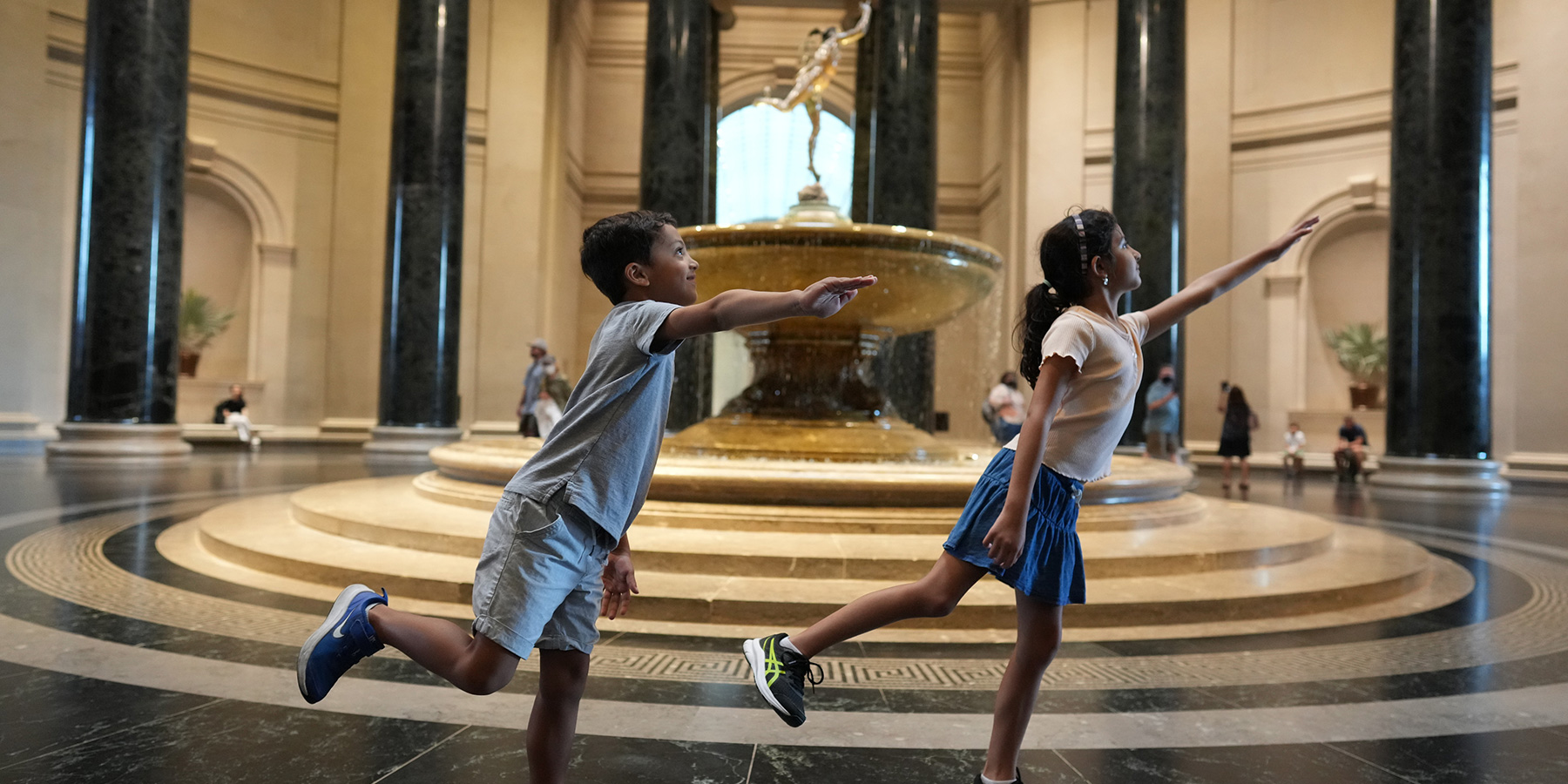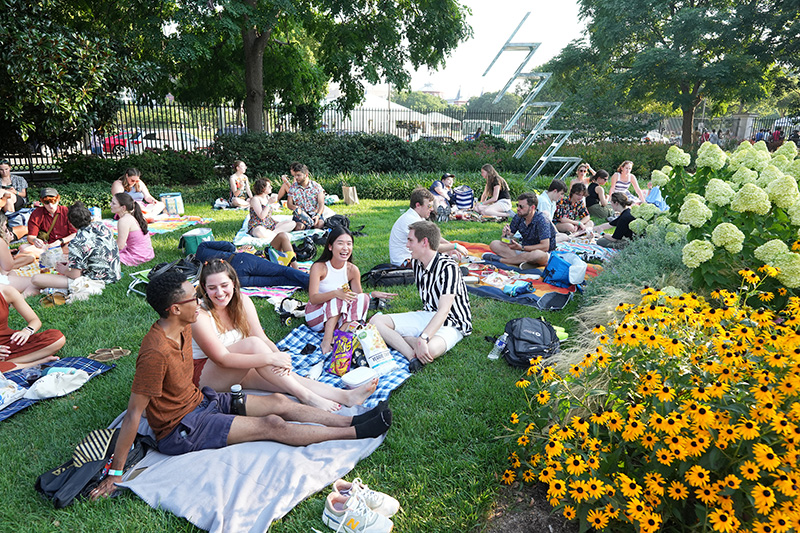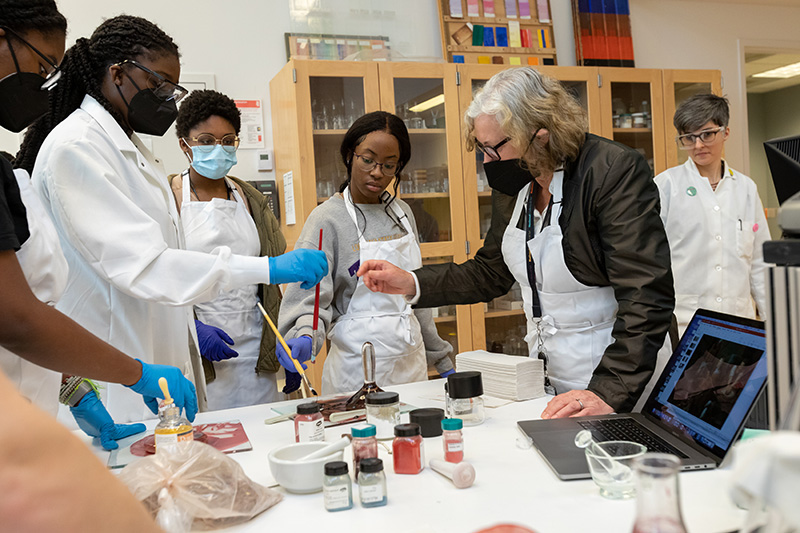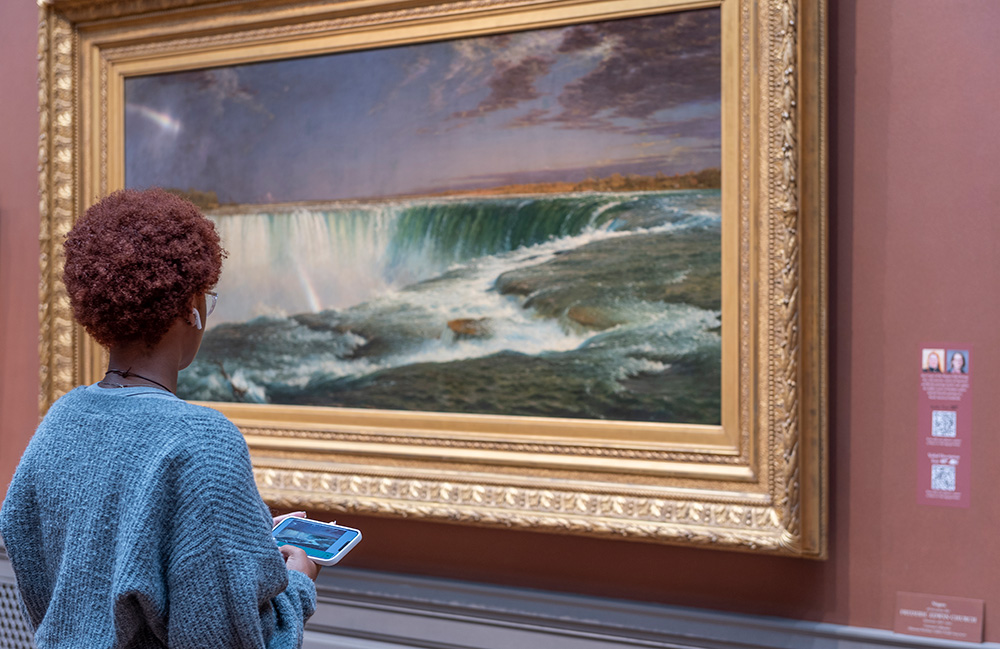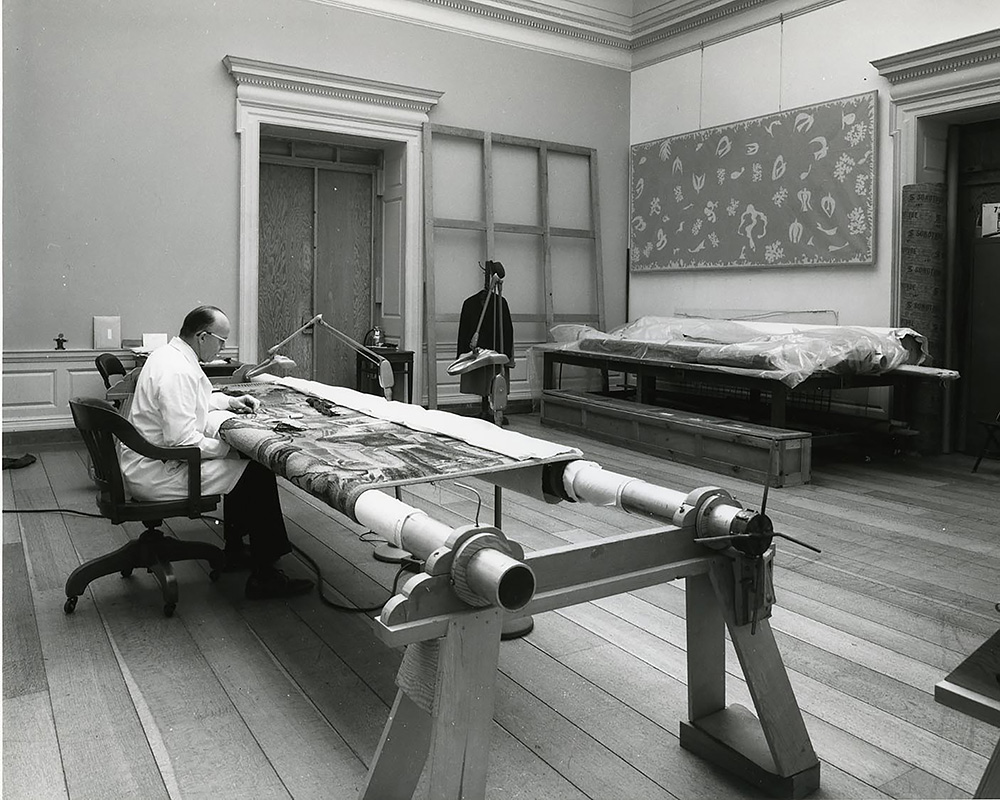The National Gallery of Art provides its audience of millions with a meaningful connection to art and culture. In fiscal year 2022, our engaging collections, special exhibitions, and programming flourished as we continued to emerge from the COVID-19 pandemic with optimism and commitment to our mission to welcome all people to explore and experience art, creativity, and our shared humanity.
We mounted 10 major special exhibitions, including the groundbreaking Afro-Atlantic Histories. We expanded and evolved our collections and acquisition plans to better reflect the expansive diversity of the American people. A significant number of works entered the collection by Latinx, Black, Native American, and international artists including Freddy Rodríguez, Sonia Gomes, Lee Ufan, Kiki Kogelnik, Rashid Johnson, Marie Watt, Emmi Whitehorse, Christina Fernandez, LaToya Ruby Frazier, John Wilson, and Zarina. Committed to the excellence of our historic European collections, we acquired works by artists including Lavinia Fontana, Luisa Roldán, and Jan Muller.
Complementing our robust exhibitions, our in-person education initiatives and community and public programs returned to full strength, with a slate of lectures, tours, concert series, and film programs. Our conservation division, with one of the most highly respected and extensive conservation laboratories in the world, celebrated its fiftieth anniversary. Our Center for Advanced Study in the Visual Arts expanded initiatives and partnerships to enhance the Center’s scholarly work and support of pathways to the museum field, including welcoming our new undergraduate interns from Howard University.
We invite you to join us in celebrating these major accomplishments and more in our fiscal year 2022 year-in-review. I am extremely grateful to our staff and volunteers who have worked so hard to emerge from a difficult time with integrity, excellence, inclusivity, and empathy. Thank you also to Congress and the administration, and our Board of Trustees, donors, and national members who support our efforts every year. Together, we will achieve our vision to be a museum of the nation and for all the people.
Kaywin Feldman
Director
